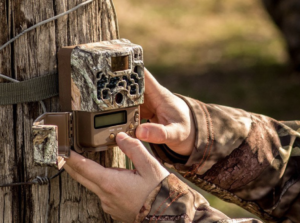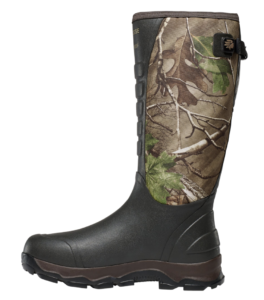In late summer a lot of hunters are thinking about deer, elk and other big game but predator hunters are counting down the days to cooler weather to pursue coyotes or set trap lines.
Lord have mercy, summer's tough on coyote hunters. Between the searing heat and the mangy songdogs, it's not impossible to work in some hunts but it can be tough. Earlier this summer I ventured to Blue Bank Resort on Reelfoot Lake to do a little fishing and work in a coyote hunt or two. It was toasty hot and the coyotes didn't want to play, but I got a good scouting session in for some autumn hunts.
Instead of beating myself to death with tough summer hunting in jungle conditions, I decided to plan for the next six or eight months. Here's what I'm doing:

Using game cameras to establish patterns and see what kind of predators are in your area is a great way to prepare for autumn and winter hunting. (Photo: Browning Trail Cameras)
Game Camera Surveys
On my primary hunting property I have a few Stealth Cam and Browning game cameras in some key locations. One is a heavily-traveled route the animals don't seem to avoid even when I've walked through there or driven my vehicle through there. I have camera images of deer, raccoons, bobcats, coyotes and it's almost like a runway stage for them.
The key, of course, is this all helps me pattern the times and locations. I can get a sense of when they're moving through and plan accordingly. If you have some hunting locations that seem pretty reliable, you can use game cameras to your advantage, too.
Weed-Whacking for Hunting
Two of my favorite tools to use for specific tasks are a string-trimmer, commonly known as a Weedeater, and a leaf-blower. Mine are gas-powered so I can haul them into the woods along with a small can of gas and then get to work.
What do these do for me? I can create clean, quiet walking paths through the leaf litter and vegetation to move more stealthily. This might be more handy for deer hunting but it's also beneficial for chasing predators. Why make noise and give yourself away when you can do a little work months before you hunt?
Unfortunately, the "home use" string-trimmer I have now isn't sturdy enough for heavy use against woodsy, fibrous vegetation. It'll cut through light weeds but anything like briars or thick-stem stuff and it balks. I'm looking for a good, burly commercial grade string-trimmer to upgrade and really get the job done.
My routine is easy: I find where I want to walk, whether from one area to another or to a stand site, and then start clearing. I'll create a path 15 or so inches wide and then come back with the leaf-blower to clean it to the dirt. During hunting season when the leaves fall off trees they don't seem to pile up on the path, either. Perhaps the wind more easily blows them away.
Pick Sites for Blinds
In concert with the string-trimmer work I'll look for sites for ground blinds or ladder stands and clean out those areas, too. One of the coolest things about pop-up ground blinds, like the NAP Mantis I'm using this autumn, is it has an ample footprint and once set up and staked then I can hunt from it for months.
To do this, though, I like to clean out everything where the blind will sit. Finding a good spot along with entry and exit routes, and then clean sightlines to shoot a bow, crossbow or gun, takes a little scouting. I've located a couple for the upcoming season and will be creating a "floor" of sorts for the blind.
One note: if you're doing this, always without fail be sure to check for snakes inside the blind before you get plopped down to hunt. In the shady, cooler interior you never know if Mr. No-Shoulders will like it there as much as you do.
Prep Your Gear
If you're using an electronic caller like one from FoxPro, now's the time to make sure you have batteries, charging cords, all your files are set and updated or whatever else needs to be done to the call.

Snake boots, such as these Lacrosse 4xAlpha, can be a hunter's best friend until cold weather arrives. (Photo: Lacrosse Boots)
If you prefer mouth calls, make sure your diaphragm calls aren't worn out (unless you like 'em that way) and your reed calls are in good shape. Nothing stinks worse than getting to a setup and finding out that any of your calls have an issue, whether electronic- or lung-activated.
Where I hunt, good snake boots are a must. My Lacrosse 4xAlpha snake boots have a couple of years on them but they're still incredibly comfortable. I've worn them from the Carolinas to west Texas and Kansas, and never worry about anything. They're also great for busting through nasty brush and thorns. If you prefer a lace-up I'd recommend the 17-inch Danner Pronghorn snake boot.
One other thing I do is wash my Pneuma Tenacity Coolcore shirt and pant in scent-free detergent and then hang them outside in the sun to dry. Along with the Scent-Killer Gold detergent I'll use some Storm cedar cover spray, both from Wildlife Research Center, before hitting the woods. If that sounds goofy to kill the scent but then spray on something, the cedar Storm spray is pretty doggone spot-on and works well where I hunt thanks to an abundance of cedars.
Summer may be hot, but it's a great time for planning and getting ready for one of the best times of the year.
Featured image:John Hafner






